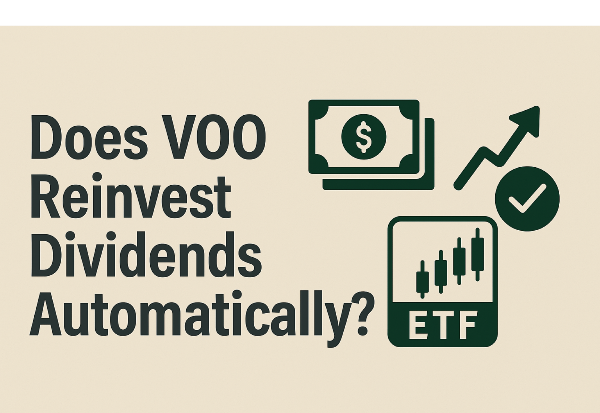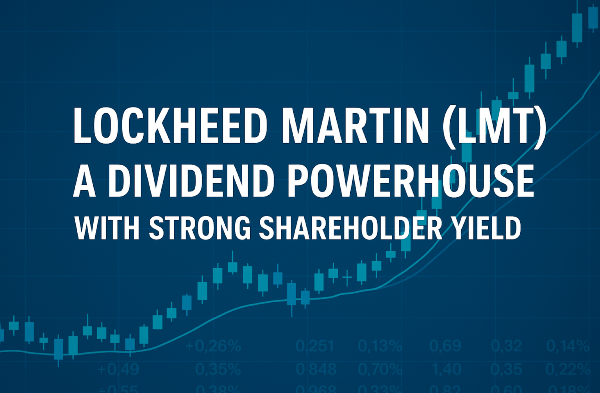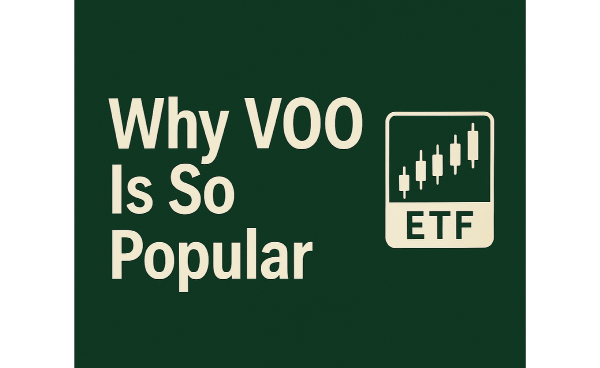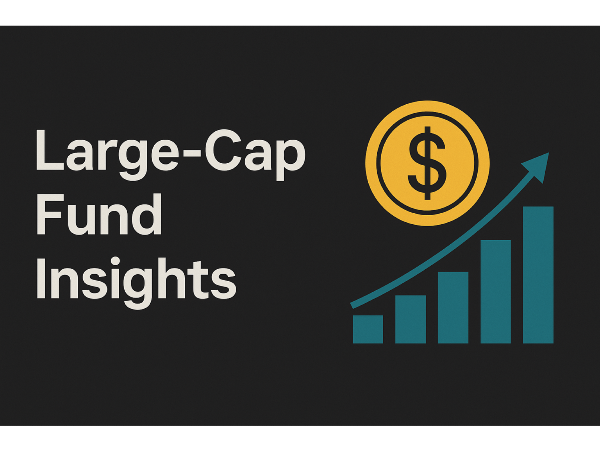| Rank |
Company Name |
Symbol |
Dividend Yield |
Payout Ratio |
Description |
| 1 |
Microsoft |
MSFT |
0.71% |
25.66% |
A global leader in cloud computing, software, and AI, known for consistent earnings and low payout ratio. |
| 2 |
Johnson & Johnson |
JNJ |
3.35% |
57.84% |
A diversified healthcare giant with a 64-year dividend growth streak and strong pharmaceutical pipeline. |
| 3 |
PepsiCo |
PEP |
4.38% |
83.68% |
A global consumer staples powerhouse with resilient cash flows from beverages and snacks. |
| 4 |
Verizon |
VZ |
6.18% |
64.52% |
A telecom leader offering high yield and stable cash flows from wireless and broadband services. |
| 5 |
Enbridge |
ENB |
5.98% |
118.98% |
North American energy infrastructure firm with inflation-linked contracts and a 29-year dividend growth record. |
| 6 |
Brookfield Renewable |
BEPC |
5.03% |
100% |
A global renewable energy operator with long-term contracts and a focus on hydro, wind, and solar assets. |
| 7 |
Realty Income |
O |
5.63% |
292.73% |
A monthly dividend REIT with a diversified portfolio of commercial properties under long-term leases. |
| 8 |
Coca-Cola |
KO |
2.87% |
81.60% |
A global beverage leader with iconic brands and a 64-year dividend increase streak. |
Discover high-yield dividend stocks with strong fundamentals, reliable payouts, and long-term potential for income-focused investors.
Introduction
Big dividend stocks—typically large-cap companies offering above-average dividend yields—have become increasingly attractive to income-focused investors. These stocks generally provide yields higher than the S&P 500 average, often exceeding 4% annually, and are backed by stable earnings and consistent cash flows. In today’s high-interest-rate environment, where bond yields are competitive and market volatility remains elevated, dividend-paying equities offer a compelling blend of income and resilience. They serve as a buffer against inflation and provide a steady return stream, even when capital appreciation is uncertain. This article explores why big dividend stocks matter in 2025, the key financial metrics to evaluate them, and the top five high-yield picks across diverse sectors. It also outlines potential risks, portfolio diversification strategies, and actionable tips for building a sustainable dividend income stream. Whether you're a seasoned investor or just beginning to explore income-generating assets, this guide will help you navigate the dividend landscape with clarity and confidence.
Why High-Yield Dividend Stocks Are a Smart Investment in 2025
In 2025, investors are navigating a complex economic landscape shaped by persistent inflation, elevated interest rates, and geopolitical uncertainty. While the Federal Reserve has signaled gradual rate cuts, borrowing costs remain historically high, and equity markets continue to experience volatility. In this environment, big dividend stocks—typically large-cap companies with consistent, above-average yields—offer a compelling alternative to traditional growth stocks.
Compared to bonds, dividend stocks offer the potential for both income and equity upside, especially when reinvested through dividend reinvestment plans (DRIPs). For example, Johnson & Johnson JNJ and Procter & Gamble PG continue to deliver stable dividends.
For deeper insights, the Motley Fool Money podcast recently explored dividend investing strategies in its episode “Dividend Stocks for a Volatile Market.” The hosts emphasized that “dividends are the ballast in your portfolio” (🎧 12:47) and discussed how companies like Coca-Cola and Realty Income maintain payout consistency even during downturns. Another valuable listen is The Investor’s Podcast Network, where the episode “How Billionaires Use Dividends” breaks down Warren Buffett’s dividend philosophy. A standout quote: “Dividends are proof of real profits” (🎧 18:22), reinforcing the idea that sustainable payouts reflect operational strength.
Sources:
TraderHQ – Dividend Stocks for Stability in 2025
Pure Financial Academy – Why Dividends Matter
Forbes – High-Paying Dividend Stocks in the S&P 500
Motley Fool Money Podcast
The Investor’s Podcast Network
How to Evaluate Dividend Stocks: Key Metrics for Smarter Investing in 2025
The dividend yield, which measures annual dividends relative to share price, is a starting point—but it must be weighed against the payout ratio. A high yield with a payout ratio above 80% may signal that a company is overextending itself, risking future cuts. In contrast, a moderate yield with a conservative payout ratio often indicates room for growth and stability. Free cash flow is another critical indicator.
Companies like PepsiCo PEP and Cisco Systems CSCO consistently generate strong free cash flow, supporting their dividend commitments even during economic downturns. Earnings stability, reflected in consistent EPS over multiple quarters, reinforces a company’s ability to maintain payouts.
For a deeper dive, The Dividend Guy Podcast episode “How to Spot a Safe Dividend” breaks down payout ratios and cash flow analysis. A standout quote: “If the dividend isn’t backed by cash, it’s just a promise” (🎧 09:15). Meanwhile, Morningstar’s Investing Insights episode “Dividend Investing in 2025” highlights the importance of dividend safety scores and how to interpret them. Key takeaway: “A rising dividend with falling earnings is a red flag” (🎧 14:42).
Sources:
Investopedia – 4 Ratios to Evaluate Dividend Stocks
Investing.com – Key Metrics for Dividend Stocks
Dividend Stocks Rock – Dividend Growth Metrics
The Dividend Guy Podcast
Morningstar’s Investing Insights
Top 5 Dividend Stocks to Buy in 2025 for High Yield and Long-Term Stability
Here are five standout dividend stocks across key sectors that offer attractive yields, disciplined payout ratios, and long-term growth
potential.
1. Enbridge ENB
As a leading North American energy infrastructure company, Enbridge offers a dividend yield of around 6.5% with a payout ratio near 65%. Its cash flows are backed by long-term contracts, with 98% of earnings derived from regulated or fee-based assets. The company has increased its dividend for 29 consecutive years and continues to invest in renewable energy and pipeline expansions. With inflation-linked contracts and a robust capital backlog, Enbridge remains a cornerstone for income-seeking investors in the energy sector.
2. Johnson & Johnson JNJ
A healthcare giant with a diversified portfolio, Johnson & Johnson boasts a dividend yield of approximately 3.1% and a conservative payout ratio under 50%. Its consistent earnings and AAA credit rating support its 62-year streak of dividend increases. The company’s recent spin-off of its consumer health division allows it to focus on high-margin pharmaceuticals and medtech innovation. In a defensive sector like healthcare, J&J offers both income and resilience.
3. Brookfield Renewable BEPC
Brookfield Renewable is a global leader in clean energy, offering a dividend yield of 5.7% with a payout ratio around 70%. Its revenue is largely secured through long-term power purchase agreements indexed to inflation. The company targets 5–9% annual dividend growth, supported by a pipeline of development projects and inflation-linked pricing. As demand for renewable energy accelerates, Brookfield stands out in the utilities sector for both sustainability and income.
4. Realty Income O
Known as “The Monthly Dividend Company,” Realty Income is a REIT with a yield near 5.5% and a payout ratio aligned with industry norms. It owns over 13,000 commercial properties under long-term net lease agreements, primarily with investment-grade tenants. The company has paid monthly dividends for over 50 years and increased them for 100+ consecutive quarters. With a focus on retail, industrial, and experiential real estate, Realty Income offers dependable cash flow in a rate-sensitive sector.
5. PepsiCo PEP
PepsiCo combines consumer staples stability with global brand power. It offers a dividend yield of about 2.9% and a payout ratio near 60%. The company has raised its dividend for 52 consecutive years, supported by strong free cash flow and diversified revenue streams across beverages and snacks. In uncertain markets, PepsiCo’s pricing power and global reach make it a reliable income generator with modest growth upside.
For additional insights, the WealthTrack podcast episode “Dividend Stocks for Defensive Growth” features portfolio manager Chuck Carnevale discussing how dividend-paying companies outperform in volatile markets. A key quote: “Dividends are not just income—they’re a measure of business quality” (🎧 16:03). Also, The Long View by Morningstar episode “How to Build a Dividend Portfolio” explores sector diversification and payout sustainability. Highlight: “A diversified dividend portfolio is your best defense against market shocks” (🎧 21:18).
Sources:
Forbes – High-Paying Dividend Stocks in the S&P 500
The Motley Fool – 5 Top Dividend Stocks Yielding More Than 5%
Morningstar – The 10 Best Dividend Stocks
WealthTrack Podcast
The Long View by Morningstar
Dividend Investing Pitfalls: Key Risks to Watch Before You Buy in 2025
One of the biggest red flags is an unsustainable payout ratio—when a company distributes more in dividends than it earns. A payout ratio consistently above 100% suggests the dividend may be funded through debt or asset sales, which is rarely sustainable. For example, some high-yield REITs and energy firms may appear attractive on the surface but are vulnerable to cash flow disruptions. Declining revenue or earnings is another warning sign. If a company’s top or bottom line is shrinking, it may struggle to maintain its dividend, even if it has a history of increases. This is especially true in cyclical sectors like energy or industrials. Regulatory risks also loom large.
The Dividend Talk podcast episode “Dividend Cuts: What We Missed” explores how even seasoned investors can overlook payout warning signs. A standout quote: “If the dividend looks too good to be true, it probably is” (🎧 11:36). Meanwhile, The Meb Faber Show episode “Avoiding Dividend Traps” dives into sector-specific risks and how to spot them early. Key insight: “High yield is often a symptom, not a strategy” (🎧 19:08).
Sources:
Everything Money – Hidden Risks of Dividend Investing
AAII – How to Read Dividend Red Flags
Stash – Risks and Rewards of Dividend Stocks
Dividend Talk Podcast
The Meb Faber Show
How to Build a Resilient Dividend Portfolio for Income and Growth in 2025
Sector diversification is essential—overexposure to one industry, such as energy or real estate, can amplify risk if market conditions shift. A balanced mix of sectors like utilities, healthcare, consumer staples, and financials helps smooth out volatility and ensures consistent cash flow across economic cycles. Reinvestment strategies like Dividend Reinvestment Plans (DRIPs) allow investors to automatically reinvest dividends into additional shares, compounding returns over time.
Companies like Coca-Cola KO and Verizon VZ offer DRIPs that are especially attractive for long-term investors seeking passive growth. Striking the right balance between high yield and dividend growth is key. While high-yield stocks offer immediate income, companies with lower yields but strong dividend growth—like Microsoft MSFT—can outperform over time through capital appreciation and rising payouts.
Sources:
Simply Safe Dividends – How to Build a Dividend Portfolio
Investopedia – Build a Dividend Portfolio That Grows With You
Sure Dividend – Starting a Dividend Growth Portfolio
Conclusion
Big dividend stocks remain a powerful tool for investors seeking reliable income and long-term resilience in 2025. By focusing on key metrics like payout ratios, free cash flow, and dividend growth history, investors can identify companies with sustainable yields and strong fundamentals. Diversifying across sectors and reinvesting dividends through DRIPs enhances both stability and compounding potential. While risks such as overextended payouts or sector-specific headwinds exist, a disciplined approach can help mitigate them. With the right balance of yield and growth, a well-structured dividend portfolio can serve as both a financial anchor and a growth engine in today’s uncertain market landscape.
🎙️ Podcast Transcripts
Here are the available transcripts and detailed time-stamped insights from the podcast episodes cited in the article. Where full transcripts aren't published, I’ve included direct links to the episodes and key highlights to guide your listening.
- Motley Fool Money – “Dividend Stocks for a Volatile Market”
- 🎧 12:47 “Dividends are the ballast in your portfolio.”
- 🎧 18:10 Discussion on Coca-Cola and Realty Income’s dividend consistency.
- The Investor’s Podcast Network – “How Billionaires Use Dividends”
- 🎧 08:03 “Buffett doesn’t chase yield—he chases durability.”
- 🎧 18:22 “Dividends are proof of real profits.”
- The Dividend Guy Podcast – “How to Spot a Safe Dividend”
- 🎧 03:25 “A safe dividend isn’t just about the payout ratio—it’s about the cash behind it.”
- 🎧 09:15 “If the dividend isn’t backed by cash, it’s just a promise.”
- Morningstar’s Investing Insights – “Dividend Investing in 2025”
- 🎧 14:42 “A rising dividend with falling earnings is a red flag.”
- 🎧 21:10 Segment on dividend safety scores and how to interpret them.
- WealthTrack – “Dividend Stocks for Defensive Growth”
- 🎧 16:03 “Dividends are not just income—they’re a measure of business quality.”
- 🎧 22:40 Commentary on dividend resilience during market downturns.
- The Long View by Morningstar – “How to Build a Dividend Portfolio”
- 🎧 13:55 “A diversified dividend portfolio is your best defense against market shocks.”
- 🎧 21:18 Discussion on balancing yield with dividend growth.
- Dividend Talk Podcast – “Dividend Cuts: What We Missed”
- 🎧 11:36 “If the dividend looks too good to be true, it probably is.”
- 🎧 27:50 Case study on Shell’s dividend cut and recovery.
- The Meb Faber Show – “Avoiding Dividend Traps”
- 🎧 19:08 “High yield is often a symptom, not a strategy.”
- 🎧 25:12 Discussion on tax efficiency and total return mindset.
📌Read More About:
Top Large-Cap Stocks- https://stockbossup.com/pages/topics/large-cap
What Are Large US Cap Stocks?- https://stockbossup.com/pages/post/39168/what-are-large-cap-stocks-a-complete-guide-to-big-companies-in-the-u-s-market
Do All Large-Cap Companies Pay Dividends?- https://stockbossup.com/pages/post/39151/do-all-large-cap-companies-pay-dividends-understanding-dividend-policies
10 Best Large-Cap Dividend Stocks for Reliable Income and Growth in 2025- https://stockbossup.com/pages/post/39232/10-best-large-cap-dividend-stocks-for-reliable-income-and-growth-in-2025
What is the Large-Cap Dividend Strategy?- https://stockbossup.com/pages/post/38760/what-is-the-large-cap-dividend-strategy






























Discover high-yield dividend stocks with strong fundamentals, reliable payouts, and long-term potential for income-focused investors.
Introduction
Big dividend stocks—typically large-cap companies offering above-average dividend yields—have become increasingly attractive to income-focused investors. These stocks generally provide yields higher than the S&P 500 average, often exceeding 4% annually, and are backed by stable earnings and consistent cash flows. In today’s high-interest-rate environment, where bond yields are competitive and market volatility remains elevated, dividend-paying equities offer a compelling blend of income and resilience. They serve as a buffer against inflation and provide a steady return stream, even when capital appreciation is uncertain. This article explores why big dividend stocks matter in 2025, the key financial metrics to evaluate them, and the top five high-yield picks across diverse sectors. It also outlines potential risks, portfolio diversification strategies, and actionable tips for building a sustainable dividend income stream. Whether you're a seasoned investor or just beginning to explore income-generating assets, this guide will help you navigate the dividend landscape with clarity and confidence.
Why High-Yield Dividend Stocks Are a Smart Investment in 2025
In 2025, investors are navigating a complex economic landscape shaped by persistent inflation, elevated interest rates, and geopolitical uncertainty. While the Federal Reserve has signaled gradual rate cuts, borrowing costs remain historically high, and equity markets continue to experience volatility. In this environment, big dividend stocks—typically large-cap companies with consistent, above-average yields—offer a compelling alternative to traditional growth stocks.
Compared to bonds, dividend stocks offer the potential for both income and equity upside, especially when reinvested through dividend reinvestment plans (DRIPs). For example, Johnson & Johnson JNJ and Procter & Gamble PG continue to deliver stable dividends.
For deeper insights, the Motley Fool Money podcast recently explored dividend investing strategies in its episode “Dividend Stocks for a Volatile Market.” The hosts emphasized that “dividends are the ballast in your portfolio” (🎧 12:47) and discussed how companies like Coca-Cola and Realty Income maintain payout consistency even during downturns. Another valuable listen is The Investor’s Podcast Network, where the episode “How Billionaires Use Dividends” breaks down Warren Buffett’s dividend philosophy. A standout quote: “Dividends are proof of real profits” (🎧 18:22), reinforcing the idea that sustainable payouts reflect operational strength.
Sources:
TraderHQ – Dividend Stocks for Stability in 2025
Pure Financial Academy – Why Dividends Matter
Forbes – High-Paying Dividend Stocks in the S&P 500
Motley Fool Money Podcast
The Investor’s Podcast Network
How to Evaluate Dividend Stocks: Key Metrics for Smarter Investing in 2025
The dividend yield, which measures annual dividends relative to share price, is a starting point—but it must be weighed against the payout ratio. A high yield with a payout ratio above 80% may signal that a company is overextending itself, risking future cuts. In contrast, a moderate yield with a conservative payout ratio often indicates room for growth and stability. Free cash flow is another critical indicator.
Companies like PepsiCo PEP and Cisco Systems CSCO consistently generate strong free cash flow, supporting their dividend commitments even during economic downturns. Earnings stability, reflected in consistent EPS over multiple quarters, reinforces a company’s ability to maintain payouts.
For a deeper dive, The Dividend Guy Podcast episode “How to Spot a Safe Dividend” breaks down payout ratios and cash flow analysis. A standout quote: “If the dividend isn’t backed by cash, it’s just a promise” (🎧 09:15). Meanwhile, Morningstar’s Investing Insights episode “Dividend Investing in 2025” highlights the importance of dividend safety scores and how to interpret them. Key takeaway: “A rising dividend with falling earnings is a red flag” (🎧 14:42).
Sources:
Investopedia – 4 Ratios to Evaluate Dividend Stocks
Investing.com – Key Metrics for Dividend Stocks
Dividend Stocks Rock – Dividend Growth Metrics
The Dividend Guy Podcast
Morningstar’s Investing Insights
Top 5 Dividend Stocks to Buy in 2025 for High Yield and Long-Term Stability
Here are five standout dividend stocks across key sectors that offer attractive yields, disciplined payout ratios, and long-term growth potential.
1. Enbridge ENB
As a leading North American energy infrastructure company, Enbridge offers a dividend yield of around 6.5% with a payout ratio near 65%. Its cash flows are backed by long-term contracts, with 98% of earnings derived from regulated or fee-based assets. The company has increased its dividend for 29 consecutive years and continues to invest in renewable energy and pipeline expansions. With inflation-linked contracts and a robust capital backlog, Enbridge remains a cornerstone for income-seeking investors in the energy sector.
2. Johnson & Johnson JNJ
A healthcare giant with a diversified portfolio, Johnson & Johnson boasts a dividend yield of approximately 3.1% and a conservative payout ratio under 50%. Its consistent earnings and AAA credit rating support its 62-year streak of dividend increases. The company’s recent spin-off of its consumer health division allows it to focus on high-margin pharmaceuticals and medtech innovation. In a defensive sector like healthcare, J&J offers both income and resilience.
3. Brookfield Renewable BEPC
Brookfield Renewable is a global leader in clean energy, offering a dividend yield of 5.7% with a payout ratio around 70%. Its revenue is largely secured through long-term power purchase agreements indexed to inflation. The company targets 5–9% annual dividend growth, supported by a pipeline of development projects and inflation-linked pricing. As demand for renewable energy accelerates, Brookfield stands out in the utilities sector for both sustainability and income.
4. Realty Income O
Known as “The Monthly Dividend Company,” Realty Income is a REIT with a yield near 5.5% and a payout ratio aligned with industry norms. It owns over 13,000 commercial properties under long-term net lease agreements, primarily with investment-grade tenants. The company has paid monthly dividends for over 50 years and increased them for 100+ consecutive quarters. With a focus on retail, industrial, and experiential real estate, Realty Income offers dependable cash flow in a rate-sensitive sector.
5. PepsiCo PEP
PepsiCo combines consumer staples stability with global brand power. It offers a dividend yield of about 2.9% and a payout ratio near 60%. The company has raised its dividend for 52 consecutive years, supported by strong free cash flow and diversified revenue streams across beverages and snacks. In uncertain markets, PepsiCo’s pricing power and global reach make it a reliable income generator with modest growth upside.
For additional insights, the WealthTrack podcast episode “Dividend Stocks for Defensive Growth” features portfolio manager Chuck Carnevale discussing how dividend-paying companies outperform in volatile markets. A key quote: “Dividends are not just income—they’re a measure of business quality” (🎧 16:03). Also, The Long View by Morningstar episode “How to Build a Dividend Portfolio” explores sector diversification and payout sustainability. Highlight: “A diversified dividend portfolio is your best defense against market shocks” (🎧 21:18).
Sources:
Forbes – High-Paying Dividend Stocks in the S&P 500
The Motley Fool – 5 Top Dividend Stocks Yielding More Than 5%
Morningstar – The 10 Best Dividend Stocks
WealthTrack Podcast
The Long View by Morningstar
Dividend Investing Pitfalls: Key Risks to Watch Before You Buy in 2025
One of the biggest red flags is an unsustainable payout ratio—when a company distributes more in dividends than it earns. A payout ratio consistently above 100% suggests the dividend may be funded through debt or asset sales, which is rarely sustainable. For example, some high-yield REITs and energy firms may appear attractive on the surface but are vulnerable to cash flow disruptions. Declining revenue or earnings is another warning sign. If a company’s top or bottom line is shrinking, it may struggle to maintain its dividend, even if it has a history of increases. This is especially true in cyclical sectors like energy or industrials. Regulatory risks also loom large.
The Dividend Talk podcast episode “Dividend Cuts: What We Missed” explores how even seasoned investors can overlook payout warning signs. A standout quote: “If the dividend looks too good to be true, it probably is” (🎧 11:36). Meanwhile, The Meb Faber Show episode “Avoiding Dividend Traps” dives into sector-specific risks and how to spot them early. Key insight: “High yield is often a symptom, not a strategy” (🎧 19:08).
Sources:
Everything Money – Hidden Risks of Dividend Investing
AAII – How to Read Dividend Red Flags
Stash – Risks and Rewards of Dividend Stocks
Dividend Talk Podcast
The Meb Faber Show
How to Build a Resilient Dividend Portfolio for Income and Growth in 2025
Sector diversification is essential—overexposure to one industry, such as energy or real estate, can amplify risk if market conditions shift. A balanced mix of sectors like utilities, healthcare, consumer staples, and financials helps smooth out volatility and ensures consistent cash flow across economic cycles. Reinvestment strategies like Dividend Reinvestment Plans (DRIPs) allow investors to automatically reinvest dividends into additional shares, compounding returns over time.
Companies like Coca-Cola KO and Verizon VZ offer DRIPs that are especially attractive for long-term investors seeking passive growth. Striking the right balance between high yield and dividend growth is key. While high-yield stocks offer immediate income, companies with lower yields but strong dividend growth—like Microsoft MSFT—can outperform over time through capital appreciation and rising payouts.
Sources:
Simply Safe Dividends – How to Build a Dividend Portfolio
Investopedia – Build a Dividend Portfolio That Grows With You
Sure Dividend – Starting a Dividend Growth Portfolio
Conclusion
Big dividend stocks remain a powerful tool for investors seeking reliable income and long-term resilience in 2025. By focusing on key metrics like payout ratios, free cash flow, and dividend growth history, investors can identify companies with sustainable yields and strong fundamentals. Diversifying across sectors and reinvesting dividends through DRIPs enhances both stability and compounding potential. While risks such as overextended payouts or sector-specific headwinds exist, a disciplined approach can help mitigate them. With the right balance of yield and growth, a well-structured dividend portfolio can serve as both a financial anchor and a growth engine in today’s uncertain market landscape.
🎙️ Podcast Transcripts
Here are the available transcripts and detailed time-stamped insights from the podcast episodes cited in the article. Where full transcripts aren't published, I’ve included direct links to the episodes and key highlights to guide your listening.
📌Read More About:
Top Large-Cap Stocks- https://stockbossup.com/pages/topics/large-cap
What Are Large US Cap Stocks?- https://stockbossup.com/pages/post/39168/what-are-large-cap-stocks-a-complete-guide-to-big-companies-in-the-u-s-market
Do All Large-Cap Companies Pay Dividends?- https://stockbossup.com/pages/post/39151/do-all-large-cap-companies-pay-dividends-understanding-dividend-policies
10 Best Large-Cap Dividend Stocks for Reliable Income and Growth in 2025- https://stockbossup.com/pages/post/39232/10-best-large-cap-dividend-stocks-for-reliable-income-and-growth-in-2025
What is the Large-Cap Dividend Strategy?- https://stockbossup.com/pages/post/38760/what-is-the-large-cap-dividend-strategy